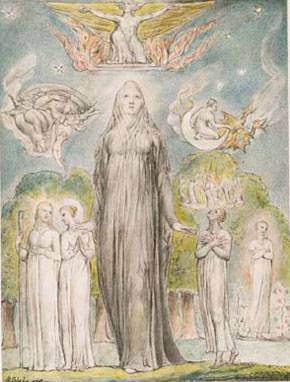
Male Figure. Champa period, 9th century. Dong Duong site, Quang Nam Province. Stone. Da Nang Museum of Cham Sculpture, 3.5

Lotus. Fu Nan period, 7th–8th century. Go Xoai site, Duc Hoa district, Long An Province. Long An Museum, BT87-M1-V-2
Arts of Ancient Viet Nam: From River Plain to Open Sea – Asia Society and MFAH
Asia Society, New York and Museum of Fine Arts Houston (MFAH) present an unprecedented exhibition of ancient art from Viet Nam—the first U.S. exhibition to address the historical, geographic and cultural contexts of pre-colonial Vietnamese art in depth.
Asia Society Museum, New York, February 2–May 2, 2010
MFAH in Houston, September 13, 2009–January 3, 2010
]]>
Source: Asia Society and MFAH
Arts of Ancient Viet Nam: From River Plain to Open Sea introduces new scholarship on the history of Vietnamese art, with approximately 110 objects dating from the first millennium BCE through the 17th century on rare loan from ten leading Vietnamese museums. The exhibition represents the first time these works have been exhibited in the United States and, for many of the objects, the first time they have traveled outside of Viet Nam.
Throughout its long history, Viet Nam served as a central hub for trade routes that connected the regions of Asia and the west with travelers and merchants traversing its long open plains. Trade vessels from as far as India and Rome found safe haven in its harbors. Objects in the exhibition illustrate the rich and complex patterns of trade and cultural exchange in southern, central and northern Viet Nam, and the varied influences of Southeast Asia, Indonesia, Japan, China, Rome and even northern Europe.
Highlights of the exhibition include ritual bronzes, terracotta burial wares, fine gold jewelry, large-scale Hindu and Buddhist sculptures and ornaments made of jade, lapis lazuli, crystal and carnelian.
The exhibition is divided into four roughly chronological sections, which explore the art of the period’s most prominent civilizations:
Early Cultures: Dong Son and Sa Huynh (1st millennium BCE–2nd century CE) will explore Viet Nam’s first “Golden Age,” which was dominated by two now legendary civilizations, the Sa Huynh in central and south Viet Nam and their contemporaries in the north, the Dong Son. Particular highlights of this section are the burial wares of the Sa Huynh people, who entombed their dead in large upright jars, the bodies positioned in crouched postures with precious offerings, weapons and smaller pottery vessels enclosed. This rare practice was not shared by the Dong Son culture in the north, which is better known for its ornamental bronze drums. Other highlights from this exhibition section include iron axes, jewelry, beads of semiprecious stones, glass and gold.
Fu Nan in the Mekong River Delta (1st–5th century CE) examines the great first-millennium civilization known as Fu Nan, which comprised several major cities connected by an advanced network of canals across southern Viet Nam and into Cambodia. The exhibition will focus on the walled city of Oc Eo, one of the civilization’s wealthiest, located at the crossroads of trade routes linking the Roman, Indian and Chinese empires. The city was a main center of manufacture, notable for its superior-quality gold jewelry inset with semi-precious and precious stones. The jewelry of Oc Eo is presented alongside imported goods from Rome, India and China from the same period.
Champa Ports of Call (5th–15th century) explores the art of the seafaring Cham people, whose central coastal kingdoms became the locus of power in the sixth century CE. The exhibition features Cham ceramics, metalwork and sculpture, which demonstrate artistic and cultural exchange between coastal Viet Nam, Indonesia, the Philippine kingdom of Butuan and other regions of Southeast Asia and India.
Trade and Exchange in Hoi An (16th–18th century) explores the city of Hoi An, which served as one of Southeast Asia’s primary international ports for two centuries. Located in central Viet Nam about 18 miles from modern Da Nang, Hoi An was the center of the ceramic trade between China, Japan and Europe. The exhibition will present ceramic wares produced in northern and central Viet Nam, and will explore the influence of Japanese, Chinese, Dutch and Portuguese traders who settled in Hoi An during the period. A group of objects recovered from a fifteenth-century shipwreck are displayed in this section of the exhibition
Follow us on:


